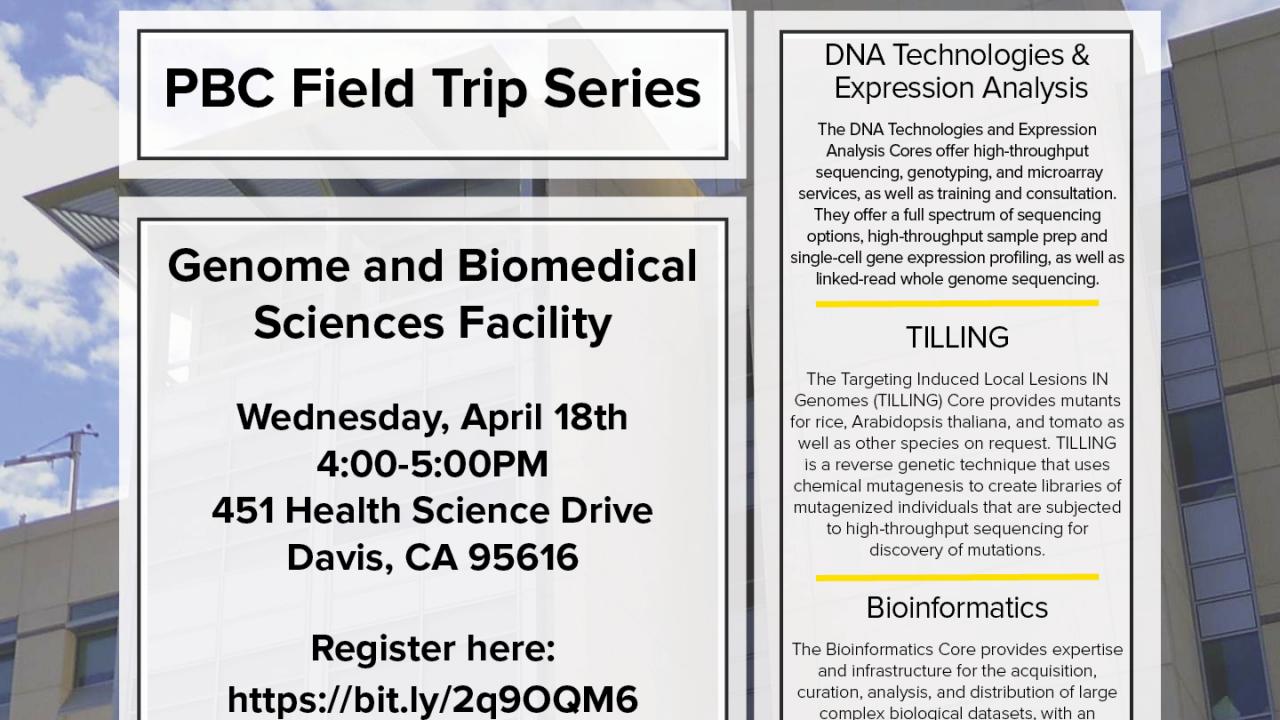
Event Date
Event Date
Location
Genome and Biomedical Sciences Facility, 451 Health Science Drive, Davis CA 95616
Link to a Map
https://goo.gl/maps/cyMt6F3nFQN2
Register here: https://bit.ly/2q9OQM6
As part of the PBC Field Trip Series we will be visiting the UC Davis Genome and Biomedical Sciences Facility. We will be visiting several Cores, including the DNA Technologies, Expression Analysis, TILLING, Bioinformatics, and Metabolomics. The tour will take place on Wednesday, April 18th from 4-5PM and the group will be meeting in the lobby of the Genome and Biomedical Sciences Facility building. Please arrive at or before 4PM sharp because it will be difficult to locate the tour group once we begin.
The PBC Field Trip Series is a monthly event. This event was formerly known as Third Thursday but now takes place on the third Wednesday afternoon of each month during the academic year.
Cores:
DNA Technologies & Expression Analysis
The DNA Technologies and Expression Analysis Cores offer high-throughput sequencing, genotyping, and microarray services, as well as training and consultation. They offer a full spectrum of sequencing options, high-throughput sample prep and single-cell gene expression profiling, as well as linked-read whole genome sequencing.
TILLING
The Targeting Induced Local Lesions IN Genomes (TILLING) Core provides mutants for rice, Arabidopsis thaliana, and tomato as well as other species on request. TILLING is a reverse genetic technique that uses chemical mutagenesis to create libraries of mutagenized individuals that are subjected to high-throughput sequencing for discovery of mutations.
Bioinformatics
The Bioinformatics Core provides expertise and infrastructure for the acquisition, curation, analysis, and distribution of large complex biological datasets, with an emphasis on sequence data.
Metabolomics
Metabolomics is the study of metabolism, specifically the science of identifying and quantifying the biochemical byproducts of metabolism, called cellular metabolites. This is done using advanced technologies such as mass spectrometry combined with sophisticated statistical methods for data interpretation.
